Indoor Pool Dehumidification: Create Healthier Natatoriums Energy Efficiently
Indoor Pool Dehumidification: Create Healthier Natatoriums Energy Efficiently
Learn about indoor pool dehumidification technologies and design that create healthy natatoriums and optimize energy efficiency.
Our technologies are customized for each job. Contact us for specifications and more information:
OVERVIEW
Indoor Pool Dehumidification Design
When designing indoor pool dehumidifiers, excess humidity, pool water chemistry and condensation issues are just a few unique challenges. For natatorium dehumidification design, there are a few strategies to avoid unnecessary issues.
The space temperature should be at least 2°F above the pool temperature, and the relative humidity must be maintained in the 50-60% range to avoid increased evaporation rates. The system should be sized for the dehumidification load instead of the cooling load. This prevents the compressor from short cycling, which reduces its lifespan.
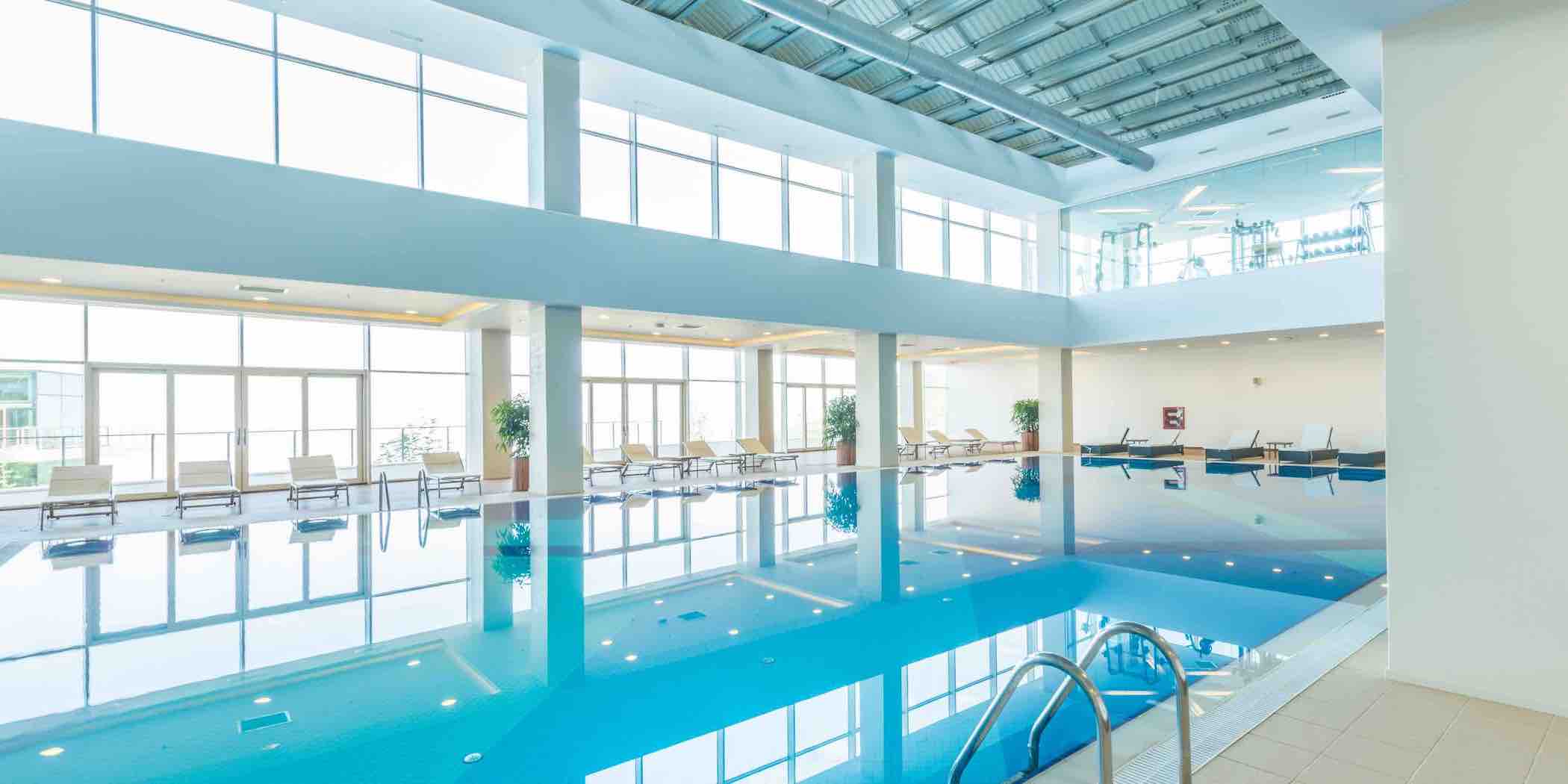
For indoor pool dehumidification design, several strategies exist to avoid unnecessary problems
The Challenge: Avoid Excess Condensation
Pool water chemistry is important for maintaining a safe environment for occupants, the health of the building and the HVAC systems. Improper pool water chemistry can cause illness, corrosion, shorten equipment lifespans and in cases of extreme neglect, it may lead to structural damage.
Limiting the amount of glazing in the natatorium reduces condensation issues, and proper thermal breaks and vapor barriers reduce avoidable issues in the future.
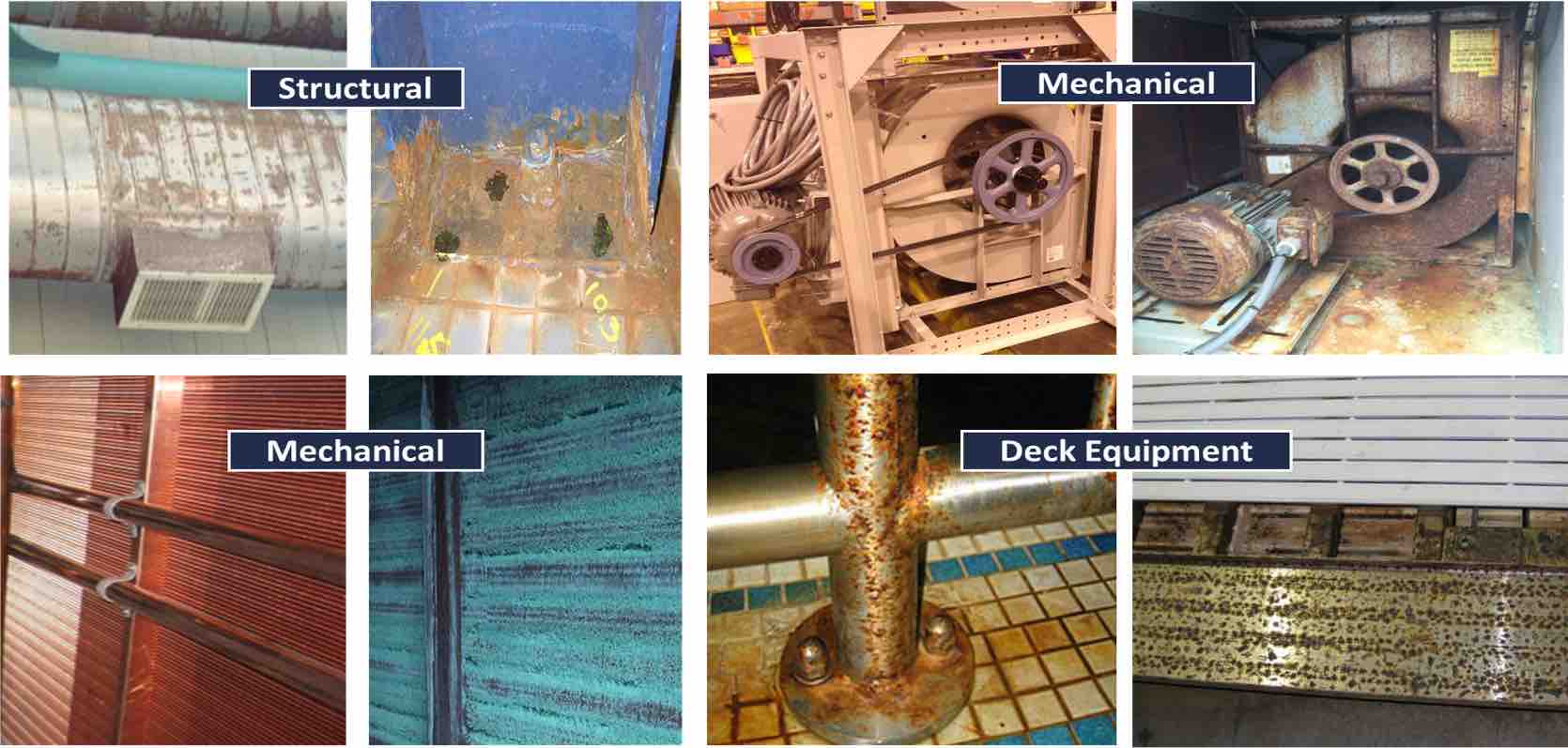
Excess condensation in an indoor pool room can cause serious damage
Air Distribution in the Indoor Pool Room
Air Changes per Hour
The natatorium should be at a slightly negative pressure. Below are the ASHRAE-recommended air changes per hour and the outdoor air requirements for the indoor pool dehumidification systems. HIGHMARK suggests 4-6 ACH for the pool area and 6-8 ACH for the spectators.
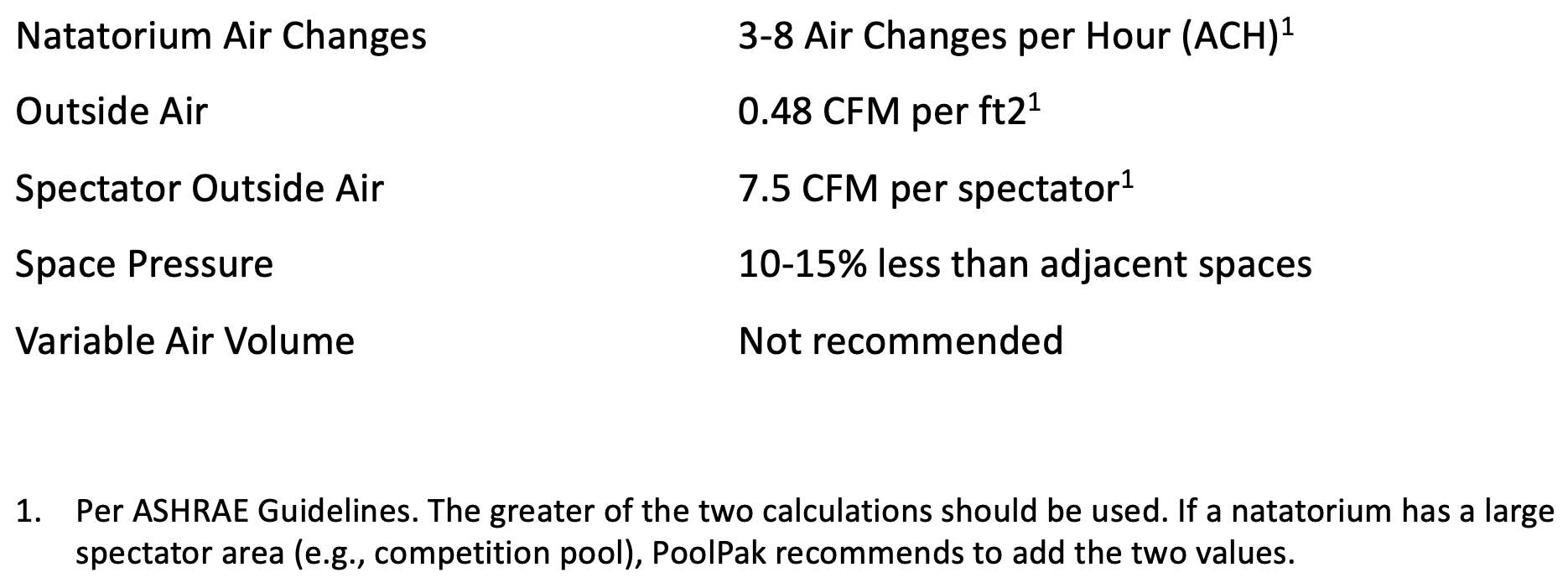
ASHRAE-recommended air changes per hour for indoor pool rooms
Air Distribution Strategy
The air distribution strategy is extremely important, and the air should be directed along windows and exterior surfaces to avoid condensation. In addition, a cold wall sensor can be placed on a glass surface to control the dew point temperature.
If the cold wall surface temperature drops as the outdoor air temperature decreases, the system will respond by lowering the dew point temperature to prevent condensation before it occurs.
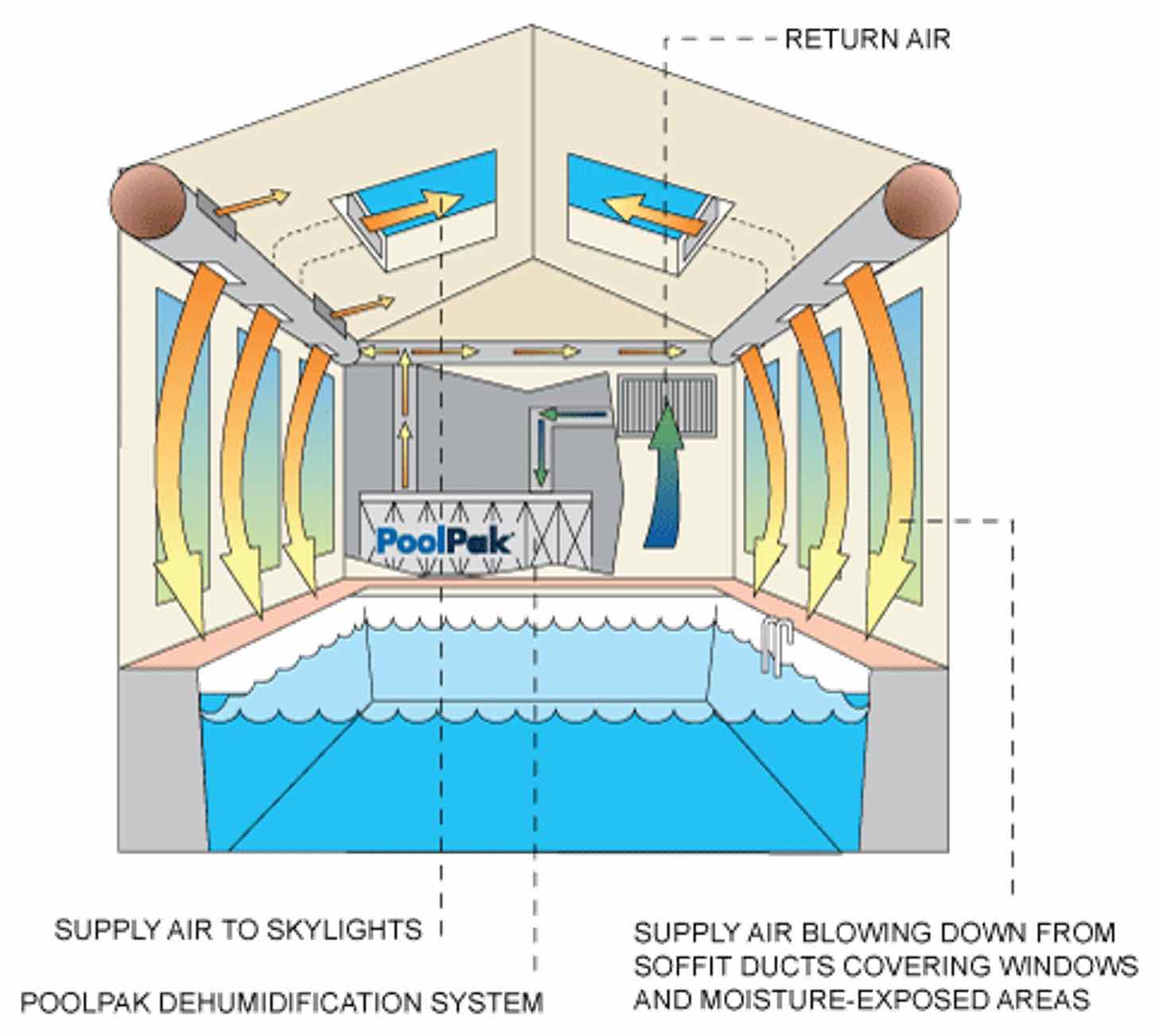
Air should be directed along windows and exterior surfaces to avoid condensation
THE SOLUTION: POOLPAK
PoolPak Indoor Pool Dehumidification
The most effective systems for natatorium applications are refrigeration systems, and these are often coupled with other equipment to meet ventilation and pressure requirements. PoolPak indoor pool dehumidifiers are all-encompassing refrigeration systems that also meet natatorium ventilation requirements. These systems are ideal for any spaces that have humidity concerns, especially indoor pools and grow facilities.
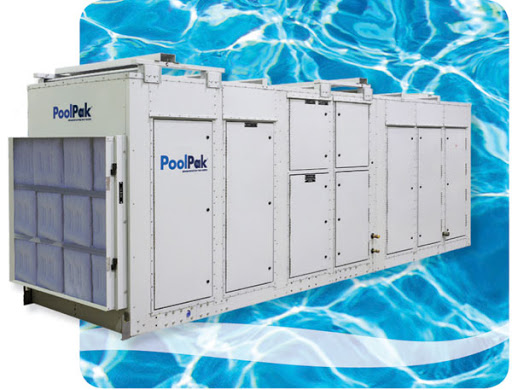
PoolPak indoor pool dehumidifiers are all-encompassing refrigeration systems that also meet natatorium ventilation requirements
Energy-Efficient Design Practices
PoolPak indoor pool dehumidification systems can be designed in several energy-efficient manners. These include:
- Economizer: An economizer significantly reduces energy consumption and associated operating costs by using free cooling when outdoor conditions are ideal.
- Pool-Water Heat Recovery: Another energy-efficient strategy for natatorium dehumidifiers is pool-water heat recovery. As the air returns to the DX coil, the heat extracted is repurposed for reheating the supply air temperature after dehumidification as well as heating the pool itself. Using pool water heat recovery can reduce the pool heating load by 30% per year.
- Condensate recovery: To save an entire pool’s worth of water each year, also consider condensate recovery. The water removed from the air is piped through the pool filtration system and back into the pool, where it belongs.
- Wall Condensation Prevention: A cold wall sensor should be placed on the coldest wall of the room (where there is less insulation). This guarantees that the unit is operating to maintain the maximum allowable humidity in the space, but at the same time will adjust down to prevent condensation from forming.
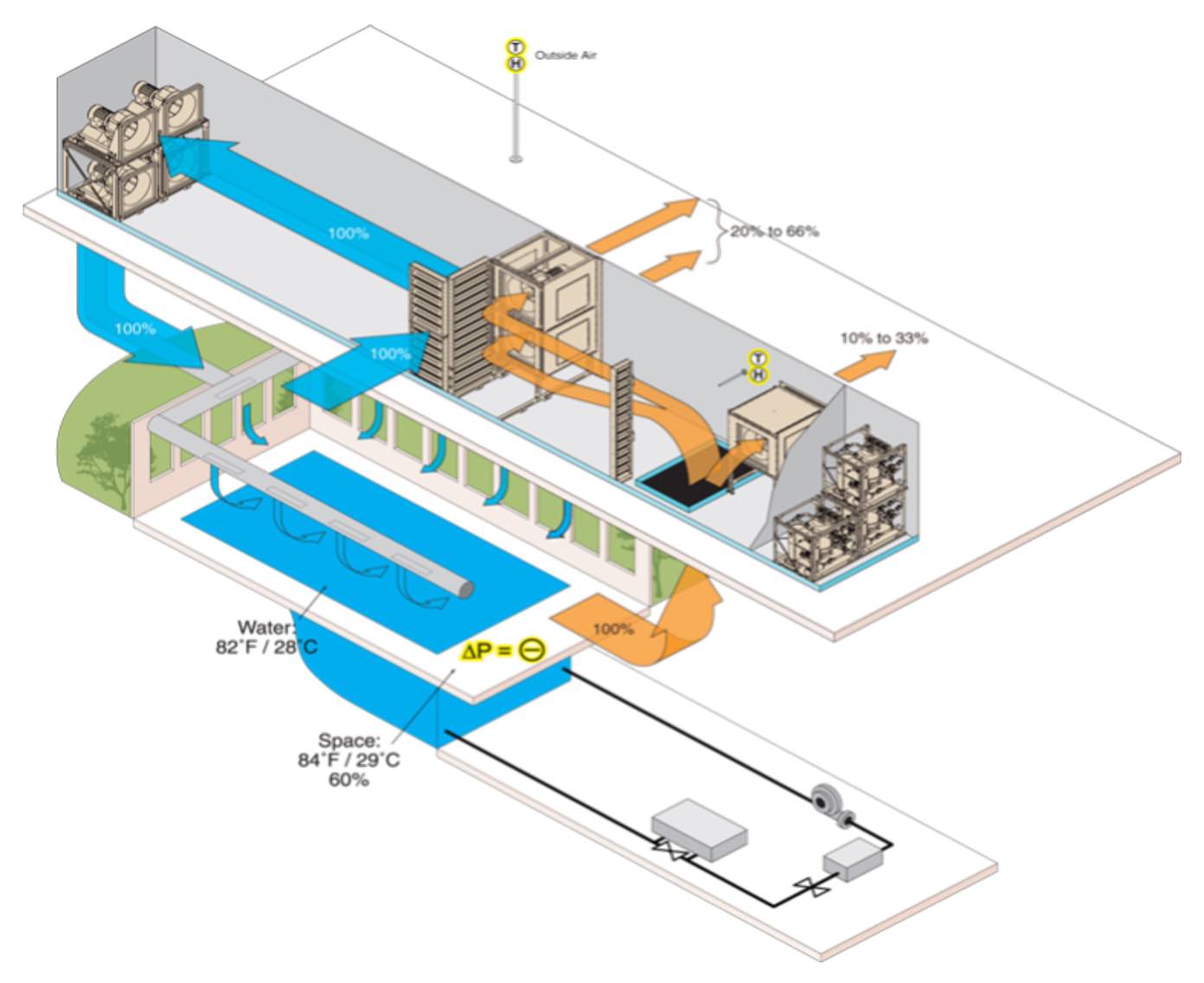
1) Economizer
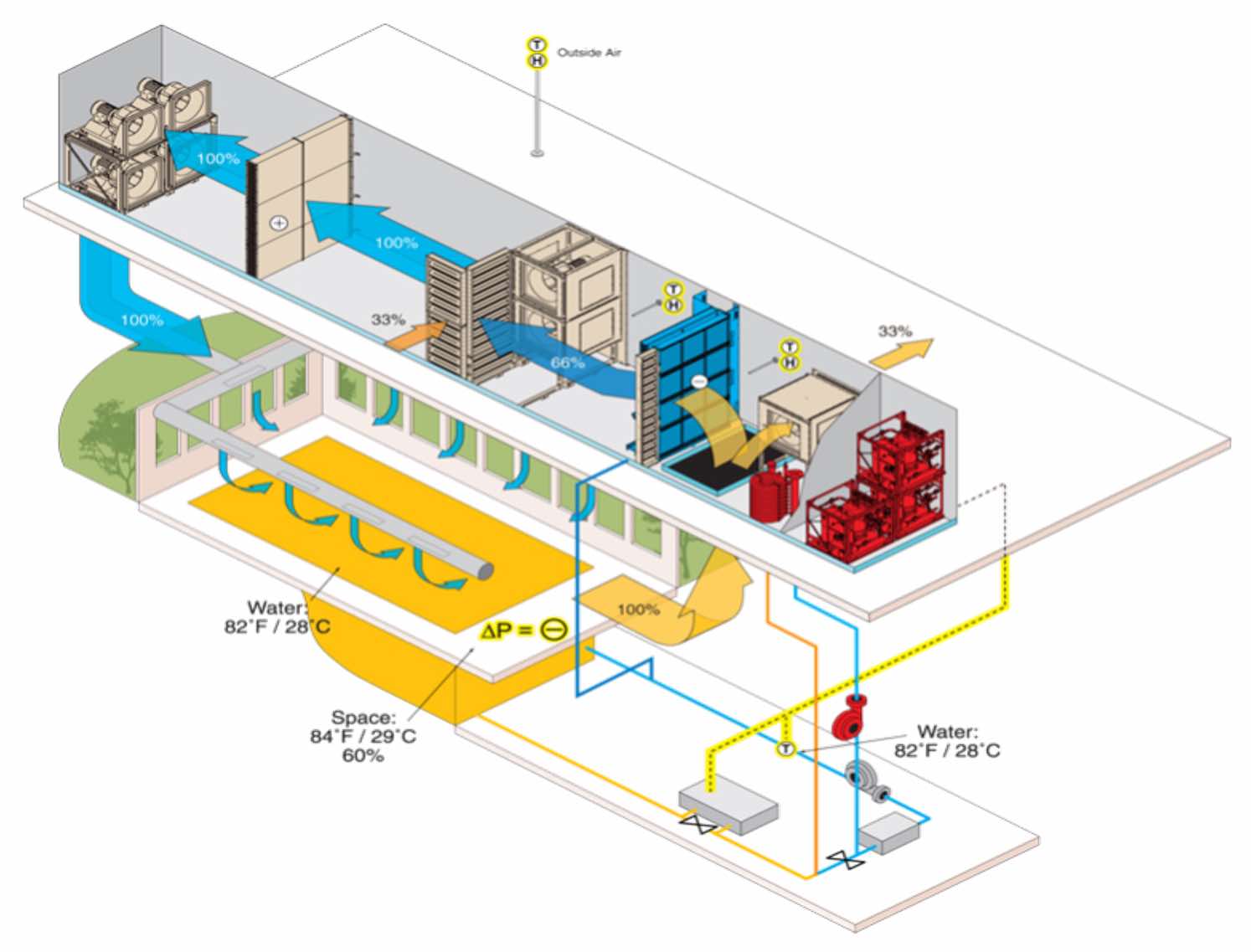
2) Pool-Water Heat Recovery
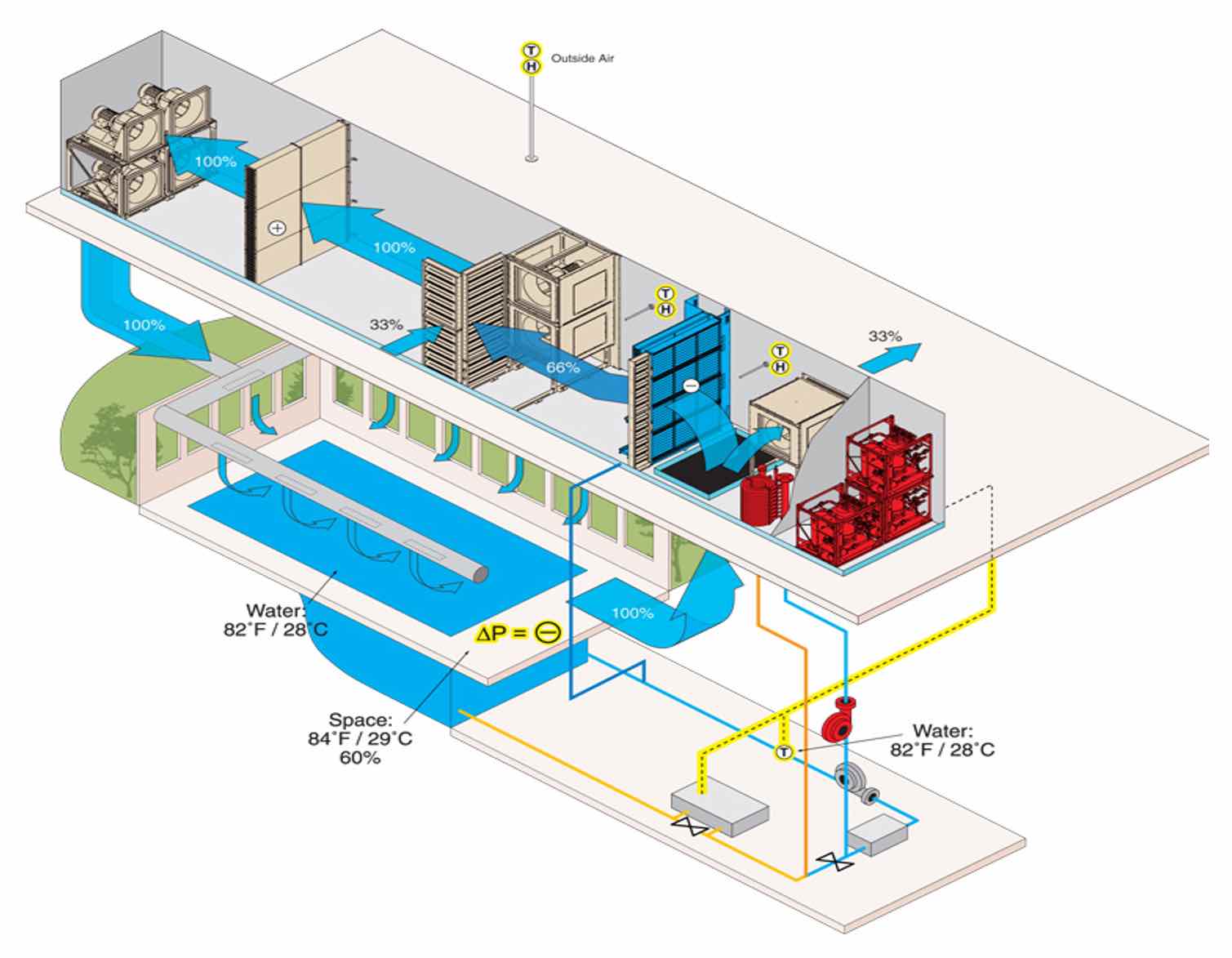
3) Condensate Recovery
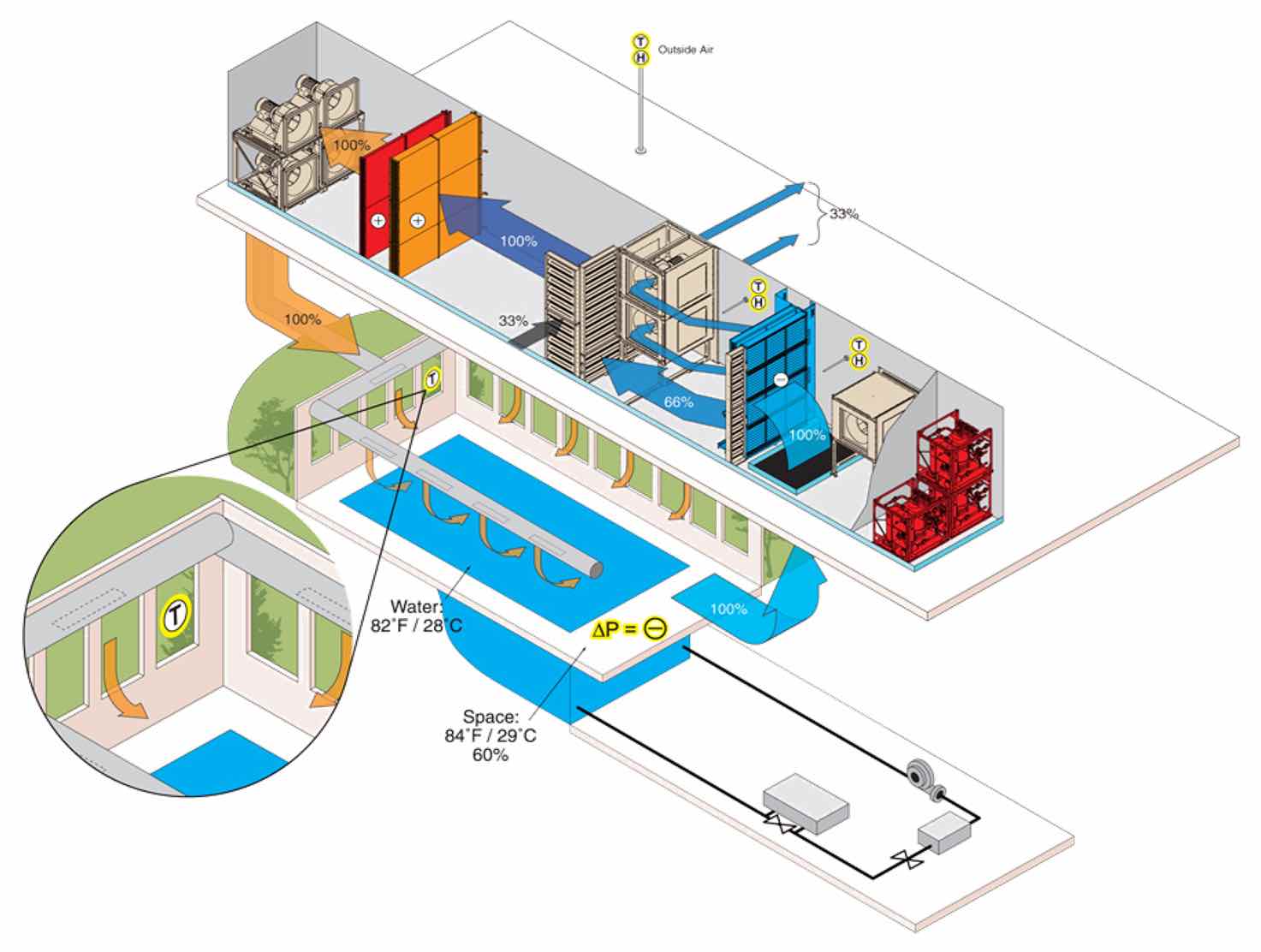
4) Wall Condensate Prevention
ON-DEMAND WEBINAR
To view an on-demand webinar on indoor pool dehumidification, click below:
On-Demand Webinar: Indoor Pool Dehumidification
Learn about indoor pool dehumidification technologies that create healthy natatoriums and optimize energy efficiency.
Contact Us for More Information
Our technologies are customized for each job. Contact us for specifications and more information.
Insights
Earth Day 2024
Earth Day— the HIGHMARK Way It’s April 22, a day...
World Water Day 2023: Accelerating Change via Building Efficiency
World Water Day 2023: Accelerating Change via...
LL97 Proposed Rules & the Building-Efficiency Technologies To Achieve Them
LL97 Proposed Rules & the...
Energy Awareness Month & Energy Efficiency Day 2022: Bolster Sustainability via Building Efficiency
Energy Awareness Month & Energy Efficiency...
World Environment Day 2022: “Only One Earth” Safeguarded via Building Efficiency
World Environment Day 2022: “Only One Earth”...
Earth Day 2022: Invest in Our Planet With Building-Efficiency Technologies
Earth Day 2022: Invest in Our Planet With...
Let’s Work Together
Technologies
Resources
About Us
© 2023 HIGHMARK | Building Efficiency






